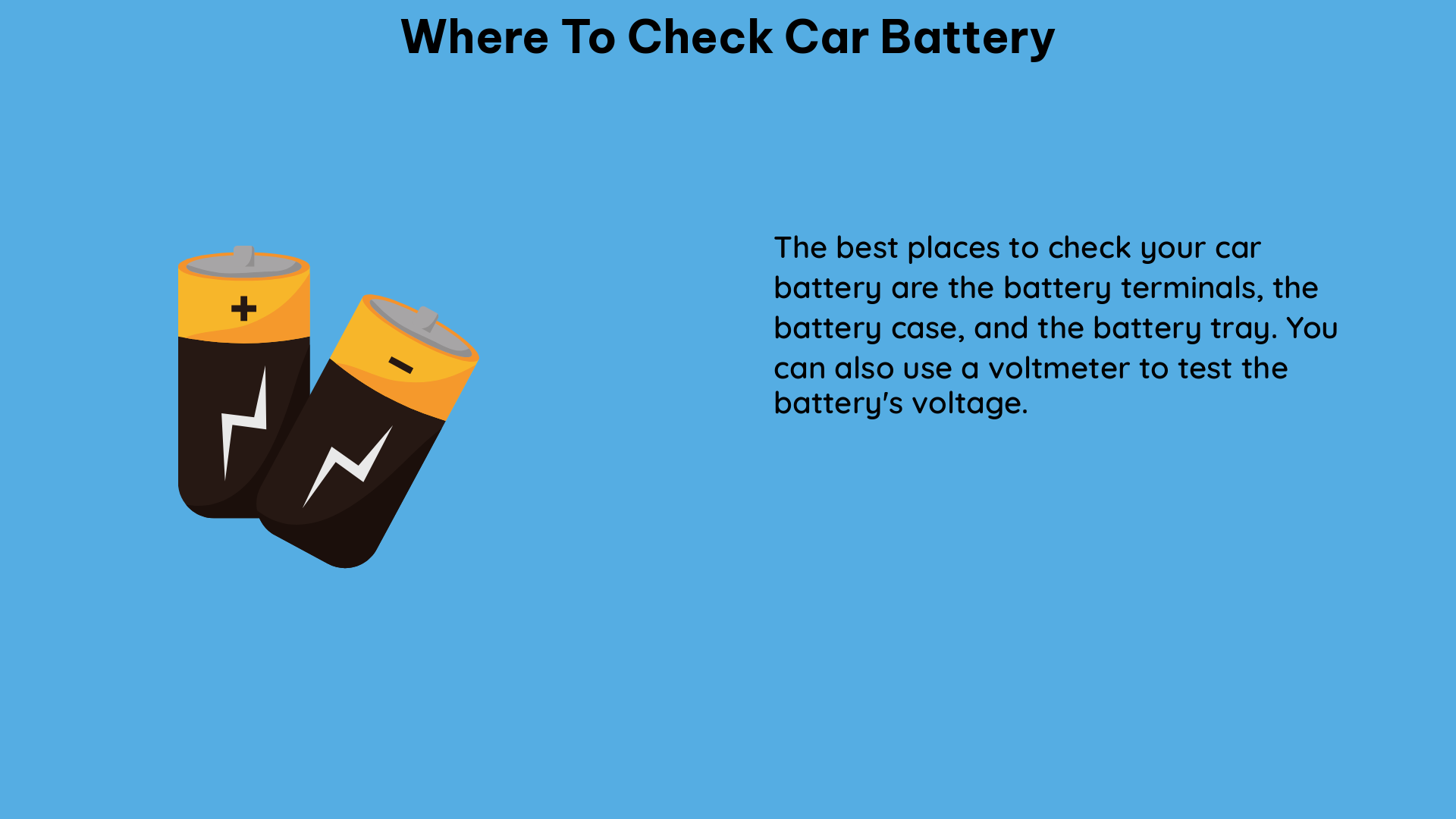Accurately checking a car battery is crucial for maintaining the overall health and performance of your vehicle. This comprehensive guide will delve into the key metrics, testing methods, and best practices to ensure your car’s battery is in optimal condition.
Measuring Battery Voltage
The first and most crucial step in checking a car battery is to measure its voltage. This can be done using a digital multimeter, a versatile tool that can provide precise readings of the battery’s voltage.
When the car is turned off, a healthy 12-volt battery should ideally have a voltage of around 12.6 volts. This indicates that the battery is fully charged and ready to power the vehicle’s electrical systems.
However, when the car is running, the voltage should increase to around 14.46 volts. This voltage increase signifies that the alternator is properly charging the battery, ensuring a consistent power supply for the vehicle’s various components.
Evaluating Cold Cranking Amps (CCA)

Another essential metric to consider when checking a car battery is the Cold Cranking Amps (CCA). This measurement indicates the number of amps a new, fully charged battery can provide at 0°F for 30 seconds before dropping below 7.2 volts.
The CCA rating is crucial for determining the battery’s ability to start the engine in cold temperatures. A higher CCA rating generally indicates a more powerful battery that can handle the increased demand during cold weather starts.
For example, a typical passenger vehicle battery may have a CCA rating of around 500-800 amps, while a heavy-duty truck battery may have a CCA rating of 800-1,000 amps or more.
Assessing Reserve Capacity (RC)
In addition to voltage and CCA, the Reserve Capacity (RC) is another critical metric to evaluate when checking a car battery. The RC indicates how long a new, fully charged battery can provide 25 amps of power before dropping below 10.5 volts at 80°F.
This metric is essential for determining the battery’s ability to supply constant power for modern vehicles’ advanced safety features and conveniences, such as GPS, infotainment systems, and emergency lighting.
A typical passenger vehicle battery may have an RC rating of around 90-120 minutes, while a heavy-duty truck battery may have an RC rating of 120-180 minutes or more.
Considering Battery Type
When testing a car battery, it’s crucial to consider the battery’s type, as different testing methods may be required for absorbed glass-mat (AGM) and flooded lead-acid batteries.
For flooded lead-acid batteries, refractometer testing may be necessary to measure the specific gravity of the electrolyte. This test can provide valuable information about the battery’s state of charge and overall health.
On the other hand, AGM batteries are sealed and do not require electrolyte maintenance. These batteries are often tested using a digital multimeter to measure the voltage and assess the battery’s condition.
Interpreting Test Results
Once you have gathered the necessary data, such as voltage, CCA, and RC, it’s important to interpret the results and determine the overall health of the car battery.
A battery that meets or exceeds the manufacturer’s recommended specifications is generally considered to be in good condition and ready to power the vehicle. However, if the battery falls short of these standards, it may be time to consider a replacement.
It’s also important to note that battery performance can be affected by various factors, such as age, usage patterns, and environmental conditions. Regular battery checks and maintenance can help extend the battery’s lifespan and ensure reliable performance.
Conclusion
Accurately checking a car battery is a crucial step in maintaining the overall health and performance of your vehicle. By understanding the key metrics, testing methods, and best practices, you can ensure your car’s battery is in optimal condition and ready to power your vehicle’s electrical systems.
Remember, it’s always best to consult the manufacturer’s recommendations and follow the appropriate safety precautions when working with car batteries to avoid potential damage or injury.
References:
- How to check a Car Battery with a Multimeter – YouTube, https://www.youtube.com/watch?v=VlkYGIMFj48
- Key Metrics of Battery Performance for Today’s Engines, https://www.stryten.com/key-metrics-of-battery-performance-for-todays-engines/
- 5 car battery testing methods explained – Vehicle Service Pros, https://www.vehicleservicepros.com/service-repair/article/21257507/5-battery-testing-methods-explained
- How to Test a Car Battery with a Multimeter – YouTube, https://www.youtube.com/watch?v=COJr7OB23Hw

The lambdageeks.com Core SME Team is a group of experienced subject matter experts from diverse scientific and technical fields including Physics, Chemistry, Technology,Electronics & Electrical Engineering, Automotive, Mechanical Engineering. Our team collaborates to create high-quality, well-researched articles on a wide range of science and technology topics for the lambdageeks.com website.
All Our Senior SME are having more than 7 Years of experience in the respective fields . They are either Working Industry Professionals or assocaited With different Universities. Refer Our Authors Page to get to know About our Core SMEs.